Airbags play an important role in driver and passenger safety during car crashes. These reduce the risk of serious injury and death caused by accidents. However, airbags can also cause friction, thermal, and chemical burns.
Luckily, most cases of airbag burns heal without complications and are relatively minor. In this article from Philkotse.com, we will dig deeper and learn how to properly treat airbag burns.
Part 1: Respond to the injury immediately
Step 1: Usually, airbag burns are the second degree in severity. This means these need medical attention. The most commonly affected areas are the hands, neck, and face. Any types of burns in these areas should be examined by a medical practitioner, especially when the burn is chemical in nature.
Seeking medical treatment will also address any wounds that may be prone to infection.
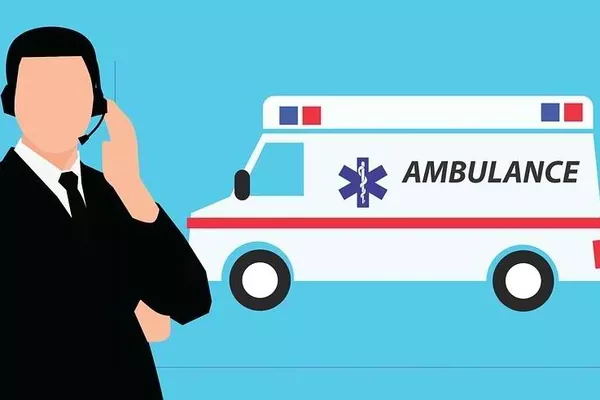 \
\
Seek medical treatment as soon as possible because burns of any type are prone to infection
Step 2: Immediately remove any jewelry and clothing near the burn because these swell quickly. These items can restrict the flow of blood and it will be hard to remove from swollen spots.
In case there's clothing stuck or melted to the burn, do not attempt to remove it yourself. Instead, cut around it, leaving the stuck or melted patch in place. Let emergency services handle it.

Clothing or jewelry can restrict the flow of blood and will be hard to remove from swollen spots
Step 3: Start irrigation by flushing or running the burn in cool or lukewarm water for at least 20 minutes. This should be done as soon as possible. There might be chemical agents present in the burn so it needs to be thoroughly flushed with as much water as possible to wash away the corrosive and toxic substances.
If the affected area is the eyes, continuously flush it while holding the eyelids open for 15 to 20 minutes. It will be easier if you do this in the shower, if possible.
You can use either a Ringer's lactate solution or saline solution in large quantities if you have access to these. But, usually, water is used because it is more likely to be available. Additionally, the burns need to be flushed continuously even while transporting to the hospital.
>>> Read more: 8 must-have items for your car emergency kit.
Part 2: Seek medical attention
Step 1: Patients need to undergo a litmus test to identify the acidity or alkalinity of the burn. This should be done once the patient arrives at the hospital. Alkaline chemical burns can be acquired from car airbags. If the pH is higher than seven, the burn is chemical. To lower the Ph, the burn needs to be flushed with water.
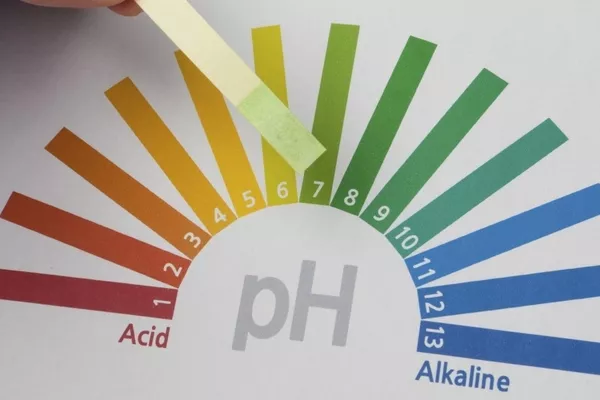
Patients need to undergo a litmus test to identify the acidity or alkalinity of the burn
There's no need to flush the burn for several hours if the pH is neutral or the pH is 7. You can proceed with applying the ointment and dressing the wound.
Step 2: Use a saline solution or water when flushing an alkaline chemical burn to bring the pH back to 7. This could take two to 12 hours to normalize.
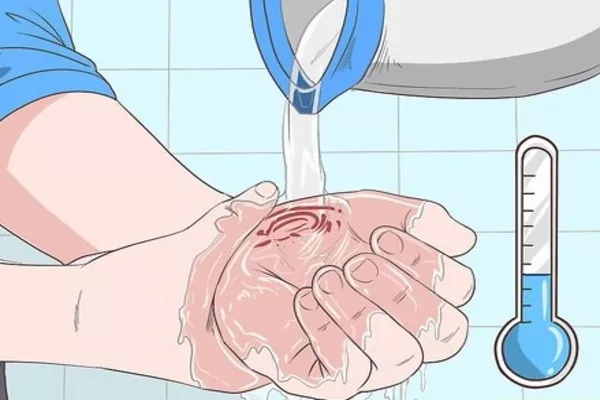
Use a saline solution or water when flushing an alkaline chemical burn
Step 3: A medical professional or a doctor will apply a topical antibiotic to the burns. It will aid in preventing infection and will also keep the affected skin moisturized. Commonly, you will also be prescribed a topical ointment at home.
Step 4: After the application of the antibiotic ointment, the doctor will dress the wound using a non-adhesive bandage or sterile gauze. It’s recommended to keep the dressing in place for 24 hours. After that, you can change it once or twice a day.
Most airbag burns are relatively minor and only require flushing and dressing. Other treatments like skin grafts for severe cases of burns probably won't be needed.
Step 5: Most probably, the doctor or medical professional will explain to you the proper care instructions like how often how you need to wash the wound, apply antibiotic ointment, and change the wound’s dressing. Instructions depend on the severity of the burn. It is important to listen carefully and take note of what the doctor is telling.
>>> Also read: Early warning device for cars: Must-have safety tool for every Pinoy driver.
Part 3: Recovering from the burn
Step 1: In cases of severe airbag burns, doctors usually prescribe pain relievers. Commonly, an over-the-counter pain reliever is recommended. Take the prescribed medication as instructed.
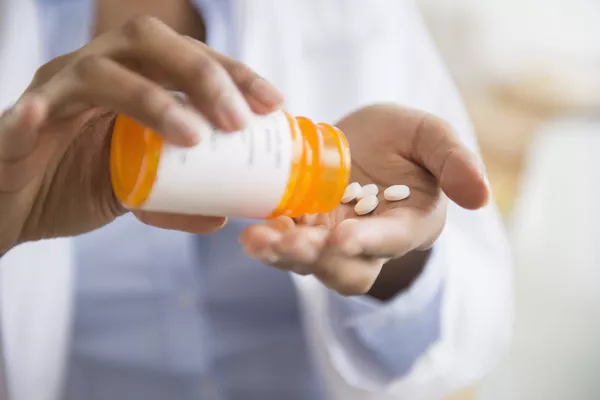
Doctors may prescribe pain relievers for burns if needed
Step 2: The dressing should be kept in place for 24 to 48 hours or longer depending on what the doctor recommends. You should remove the dressing dry and not soaked in water to help clear debris and dead tissue.
Step 3: Wash the area carefully using lukewarm water, antimicrobial soap and a clean piece of cloth. Test the temperature of the water first before flushing it over the wound.
The burn is sensitive to cold and hot temperatures. Also, avoid using liquid soaps that have alcohol in them because it could cause further damage to the wound.
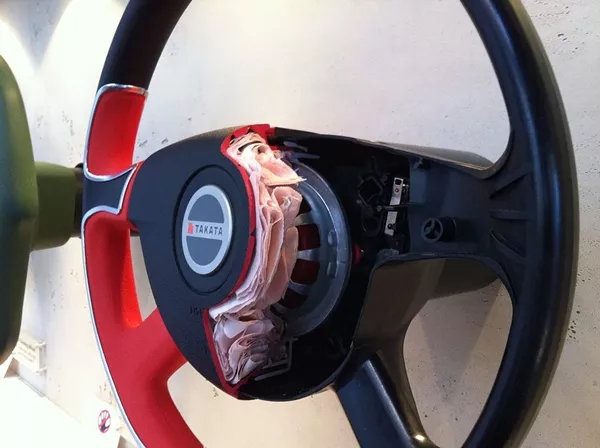
Avoid using liquid soaps that have alcohol in them because it could cause further damage to the wound
Step 4: Use a lint-free gauze or cotton swab to apply a thin layer of antibiotic ointment on the burn. Do not double touch or dip the gauze or swab to the ointment container after using it on the wound. Dispose of the gauze or swab properly and make sure it will not come into contact with any surfaces after using it to the burn.
Step 5: Redress the burn with a non-adhesive bandage or sterile gauze after washing and applying ointment. You can do this procedure once or twice a day or as recommended by the doctor. Consult your doctor about specific instructions, as you might not need to cover a burn with gauze.

Airbags play an important role in driver and passenger safety during car crashes
Step 6: You must not miss follow-up checkups, probably within one or two weeks. The doctor will check if the burn is healing properly, examine it for scarring, or check for changes in pigmentation. Usually, a burn will take around two to four weeks to heal, but it still depends on its severity.
Step 7: Seek immediate medical attention if the burn starts to be painful, seeps pus, smells bad, looks red, does not show healing within one or two weeks, feels hot to touch, and if you develop a fever.
These are signs of infection and may need additional medical treatment. If left untreated, it might result in a medical emergency.
Recent posts
- Safety first: Top 5 symptoms of a falling airbag sensors Aug 16, 2022
- A step-by-step guide on how to replace the airbags on your car Mar 10, 2022
- Seatbelts and Airbags: The ins and outs Aug 09, 2019
- Takata airbag recall: 5 important things you need to know Nov 15, 2017
- The connection between car airbags & short people and How it can endanger your safety Nov 14, 2017












